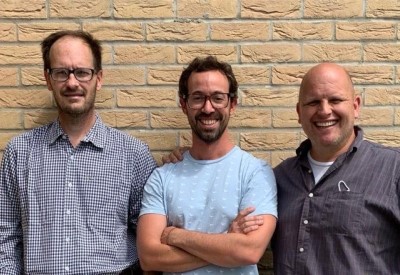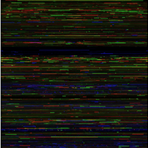An Interview with MultiplAI

Sixty million people die each year. Eighteen million die of cardiovascular problems. It is the biggest global killer.
The World Deaths Per year, How Many Deaths in The World Per year | Dead or Kicking
Heart attacks happen to healthy people. Or, at least, to those who think themselves healthy. Trisha Paddock collapsed and died in March 2022 whilst running her latest marathon. She was 46 years old. Others, Winston Churchill being a famous example, smoke, drink, do no exercise and are obese, yet live into their 90s.
Trisha Paddock dies after suffering heart attack at finish line of LA half marathon (nypost.com)
The company MultiplAI are hoping that their original formatting of RNA sequencing results taken from blood samples could change the way the world screens for those at risk of cardiovascular disease. Their novel approach takes a deep blood analysis at the molecular level and uses Artificial Intelligence to determine which people are most at risk, and much more quickly, cheaply and accurately than before. Their analysis creates a huge amount of data (20 GB per sample) which would take days to download. They have therefore created a clever platform which takes a snapshot of the data (2 MB), to provide an instantly accessible result.

Example of an image produced from RNA sequencing (Image credit: MultiplAI)
Mark Ramondt was working at a large multinational in New York. He was a fit, non-smoking who even ran a marathon or two when he developed a heart condition 15 years ago. In 2019, Santiago Miriuka, his cardiologist of twelve years, approached Mark with a business idea.
Santiago had founded a lab in Argentina, and, along with one of his researchers, Charlie Luzzani, was looking at RNA sequencing to identify opportunities for early diagnosis of cancer and other complex diseases. Though the process of liquid biopsy (using a blood draw) is widely used in cancer diagnosis, the potential for heart disease wasn’t being recognised. The scientists recognised that they needed some business experience and Santiago thought of his long-time patient, Mark. The company has developed incredibly fast since then. From that first conversation in 2019, they formed a company within a year and filed a patent shortly afterwards. Five months after forming the company in September 2020 they moved to the UK.
UK SPINE met MultiplAI Health when we funded accelerator projects through KQ Labs | Crick. I met with Mark Ramondt to speak with him about the progress of MultiplAI.
Why did you want to move your company to the UK?
The UK’s expertise in genomics, Artificial Intelligence (AI) and diagnostics, as well as the NHS’s focus on cardiovascular health, were all big pulls. Genomics England, the Wellcome Trust and others help make the UK the global leader for genomic technology. Combine that with the public funding that is available, and the talented data scientists, experts in AI and bioinformatics, and you have a clear winner.
What is the difference between RNA sequencing and DNA sequencing?
RNA is the molecule that takes the DNA and is reflected into what makes your body function. While your DNA is the same in every cell in your body unless you have mutations caused by conditions like cancer, your RNA is educated by things that change around you. Using RNA is therefore more effective for cardiovascular disease where something physical changes, for example, calcium build-up eventually causing a blood clot. When we extract the RNA blood sample it captures the state of your body in that exact moment, so it gives an informative picture of any anomalies. Using deep learning algorithms (the AI part) the test results are translated into a visual representation of the findings.
How do you test the RNA?
A simple, cheap blood test. The blood sample will last for up to 5 days without refrigeration, two weeks with it, and two months if frozen, making remote screening a global possibility. These samples are sent to our labs where we extract RNA from the blood and sequence it, which is the more expensive part. However, the cost is decreasing all the time, it is now a tenth of what it cost five years ago.
If RNA sequencing is widely used what is unique about MultiplAI?
Partly it is how deep the blood analysis is. When we first came to the UK we were working with Illumina in Cambridge who encouraged us to test as deeply as we could. We quickly found that the deeper we tested the samples the better the results, so we now perform an RNA sequence with a depth of at least 100 million reads.
At the core of MultiplAI is the organisation of data into a visual format. Sequencing such a deep sample produces a huge amount of data, a 20 gigabyte file which takes days to download. MultiplAI reduces this to a 2 megabyte picture, which makes visualisation and classification of hundreds of samples much more accessible.
How does the AI work?
The way the algorithm works is that you show an RNA picture and say “this is the DNA of a cat or a dog”, or, in this case, healthy RNA and RNA “educated” by calcium build-up and other biomarkers of heart disease. Most AI needs millions of examples to train a specific algorithm. However, because of the depth of the MultiplAI RNA sample, the data collected is so detailed and organised in a way that is ideal for algorithmic analysis, the algorithm can learn quicker with fewer samples.
The information is organised in a formatted picture with different colours based on the expression levels of different genes. By capturing the patterns we can see the difference between the healthy and unhealthy specimens.
Should MultiplAI be successful in detecting cardiovascular dysfunction early, what impact will this have on our ageing population?
Almost a third of global annual deaths are caused by CVD. 40% of NHS funding is spent on CVD. If there is precision medicine that can treat the disease pre-emptively, if there is an inexpensive global screening programme for everyone over thirty, think how many lives we could save, how much funding could be diverted to saving other lives? The data gathered will be so accurate: in theory they will be able to tell exactly when the calcium deposit caused the clot, directing the patient to immediately take anti-coagulants for example. When people can see the data showing them how at risk they are, the incentive to take care of their health through diet, exercise, medicine, will be huge.
If you could improve the treatment and survival rate of cardiovascular dysfunction, even by 10%, it could change lives, countries, and the world.
What are the next steps for MultiplAI?
We have been helped enormously by Illumina in Cambridge, and KQ Labs at The Francis Crick Institute in London, funded by UK SPINE. These programmes are called accelerator programmes for a reason. In our first week in Cambridge we were introduced to Illumina’s top person on RNA and sequencing, and encouraged to deepen our RNA sequencing as far as we could.
We are now working with The Queen Mary University in London to help their development of the polygenic risk score, or PRS. Queen Mary have an amazing track record in cardiovascular treatment, so we’re really excited about it.